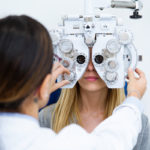
[wp_social_sharing social_options=’facebook,twitter,linkedin,’ facebook_text=’Share on Facebook’ twitter_text=’Share on Twitter’ linkedin_text=’Share on Linkedin’ icon_order=’f,t,l’ show_icons=’0′ before_button_text=” text_position=” social_image=”]

The Ortho-K Knowledge Bank provides clinical insights and strategies for practice management and business growth. It is created by Review of Optometric Business and Review of Myopia Management for sponsor GP Specialists.
Clinical Resources:
 |
Setting Up an Ortho-K Specialty for Practice and Patient Success, Matthew J. Martin, OD, FIAOMC When asked how to implement a successful and robust Ortho-K program in an optometric practice, I advise colleagues that a timeline is the place to start. I suggest a three-month timeline. A deadline of 90 days may feel like a long time, but it will fly by during your normal day-to-day clinical practice. >>Read More>> |
 |
Troubleshooting Ortho-K, Jonathan Skoner, OD, FIAOMC Troubleshooting in Ortho-K is best done when all of the crucial decision-making information is obtained for every visit. Critical follow-up information includes >>Read More>> |
 |
What Do I Need To Get Started: The Importance of The Fitting Set, Matthew J. Martin, OD, FIAOMC In our practice, we specialize in Ortho-K, and two aspects are critical to our success: the use of fitting sets in the contact lenses we select for our patients, along with specialized scheduling. We need to keep focused on the patient experience, and that includes accommodating the increased time and commitment needs of our busy patients who elect to do Ortho-K. >>Read More>> |
 |
Clinical Perspectives on Managing Complications with Orthokeratology, Melanie Frogozo, OD, FAAO Orthokeratology (Ortho-K) uses gas permeable (GP) lenses to reshape the cornea primarily for myopic correction. This technology has traditionally benefited adults looking to shed corrective lenses during the day. Increasingly, Ortho-K is recognized as an effective method of myopia management in adolescents. >>Read More>> |
 |
A Review of Ortho-K Lens Designs, Harvey H. Yamamoto, OD Achieving clinical success with Ortho-K requires clinical knowledge to meet the unique set of challenges that each patient presents. In addition, you need a comprehensive set of diagnostic tools and the best lens designs available to address any condition. >>Read More>> |
Business Resources:
 |
Ortho-K: A Practice Builder in Today’s Office, Allan Panzer, OD Practitioners often wonder if they should incorporate Ortho-K into their services. They ask: Is there is a market for this entity? How do they capture patients and more importantly how do they learn how to fit the lenses? >>Read More>> |
 |
How to Present Ortho-K to Patients and Parents, Matthew J. Martin, OD, FIAOMC I am often asked by fellow doctors how I explain Ortho-K to my patients. It’s simple: I use simple, easy-to-understand terms. Ortho-K is by far the most enjoyable part of my busy practice, and I believe all optometrists should offer it. However, many potential candidates can be lost if they think it is too complicated, too risky, or if they don’t understand how Ortho-K works. >>Read More>> |
 |
Getting to Yes with Ortho-K: Overcoming Patient Hesitations & Misconceptions, Steven Turpin, OD, MS Presenting Ortho-K to patients and parents can be an uphill climb. You often need to communicate the very concept of Ortho-K, describe the process it entails, set expectations and establish the overall value of it. >>Read More>> |
 |
Effective Fee Presentation With Ortho-K, Steven Turpin, OD, MS Your success rate with Ortho-K is linked to several factors: good patient selection, taking accurate measurements in initial visits, working with a leading lab to ensure a high success rate with the first lens you fit on your patients’ eyes and an effective presentation of fees and potential outcomes. >>Read More>> |
| Podcasts: | |
 |
Getting to Yes Part I: Success Tips in Ortho-K |
 |
Getting to Yes Part II: Success Tips in Ortho-K
|
 |
||
 |
 |
|
